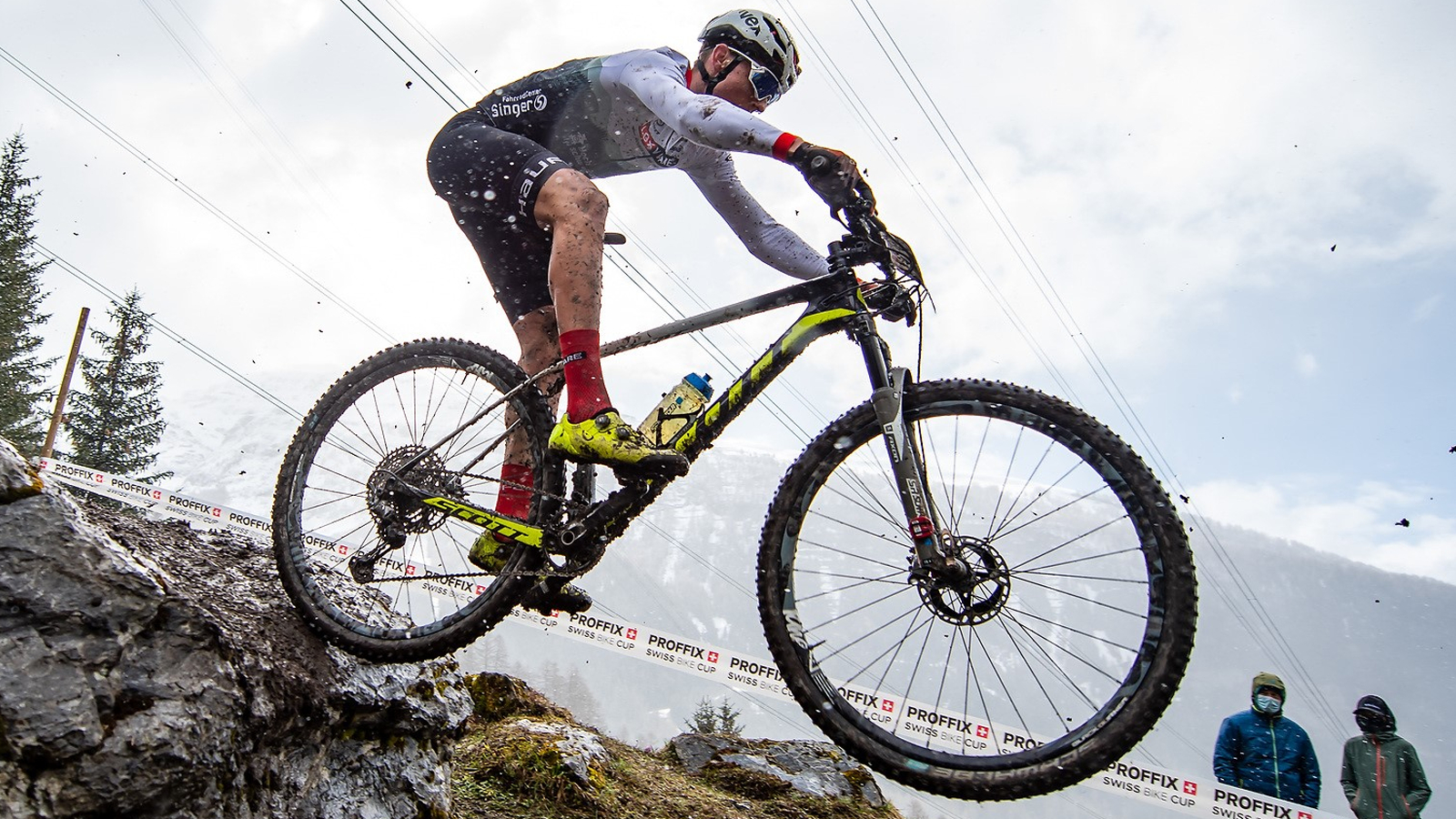Durability In Rough Terrain
Mountain biking is a bit different, you probably care more about how durable the unit will be after it has been through the crash and fall ringer. Matt explains that with the conditions mountain bikes are exposed to – mud, water, rocks, vibration etc -it makes them an abuse test for fragile gear. Selecting a power meter that is designed to handle such environments is very important.
An example would be the robust strain gauge power meter that has been favored by many mountain bikers for ages. These power meters are usually potted in a waterproof resin and located in a chamber on the crank arm to protect them from the elements (especially the Force power meter). Field tests in real-world environments have shown they provide measurements that remain consistent even with the constant shocks and vibrations encountered in downhill and trail riding.
Case studies from professional mountain bikers prove that a good power meter will survive the harshest of conditions these grueling races like the Leadville 100 or the Downieville Classic dishing out on gear and components when the going gets tough. With some of these scenarios, a power meter can be the difference between accurate power analysis and losing touch with your data mid-ride.
Think about calibrating a power meter for mountain biking. Calibration should also occur in conditions about as rough as you’re likely to face. The steps involve a pre-ride check, a mid-ride calibration at highest effort and then comparisons to ensure the measurements haven’t drifted due to environmental influence whilst riding.
Precision And Reliability Of Data In Variable Conditions
The mountain bike power meter presents an extra challenge as it must be accurate and functional in a wide variety of environmental conditions. These power meters are not designed to address the swinging levels of saturation that occur riding mountain biking trails that can go from being bone dry and dusty one minute only to disintegrate into some of the most primaryval watery mud further down the trail.
Temperature changes affect the strain gauges in power meters. A recent study comparing power data taken over a number of rides at different temperatures found that the power-reading of a non temperature-compensated power meter could show a variance of up to 3% between one that was 5°C and another that was 35°C. This is why it is so important to look for power meters with temperature-compensation to monitor your performance properly.
The reliability and the consistency of the power meter in any weather is an important criterion. Testing in the field-rain or shine Field-test data, from both rainy and sunny conditions, indicates that overall these meters work quite well in harsh outside environments, performing more robustly than meters depending solely on mechanical strain-gauges (mechanical eyes), which can suffer from water intrusion and other forms of muck.

For an example of how this would play out in real life, within a technical climb on a mountain bike race, having the precision of wattage readings from the power meter is being reliable for the rider to sustain the optimal effort without overworking in the beginning of the race. Calibration steps at the race include to checking the zero-offset before the race starts, and recalibrating if sudden drops or increases in temperature have occurred.
Ease Of Installation On Different Bike Models
This drive-side layout won a spot in our 2015 test because it simplifies installation on an array of mountain-bike designs, making it an attractive choice for both pro and amateur riders. The manner in which the power meter interfaces with a wide variety of bike frames, cranks and wheel sizes will directly affect real-world usability in the varied landscape of mountain biking.
Crank-based power meters
These devices are popular because they give a full breakdown of rider power, such as left/right balance and pedalling efficiency to give a in-depth analysis of the rider. But not all crank-based power meters fit every bottom bracket standard, so compatibility can be an issue. SRM and Stages offer a variety of models that are compatible with for the most common crank types, including Shimano, SRAM and Campagnolo, which pretty much cover a big chunk of the market. It usually requires just some simple tools, and can be done in under an hour in most cases, provided the adaptation of the power meter to the current crankset is available.
Wheel based power meters such as those from Garmin and Powertap have a different set of installation challenges and rewards. These power units replace the hub of the rear wheel, and can be swapped to other bicycles if they have the same size wheel and hub width. Installation is simple, typically requiring only a tire and cassette swap, which makes it an appealing option if you have multiple bikes.
A practitioner case is a mountain biker who use different bike like a hardtail or a full suspension one depending of the trail condition. A wheel-based power meter makes solo training easier for this rider in that its simplicity enables training to be consistent across both bikes with little warm up time. That flexibility is especially useful for making quick gear changes to suit the type of race terrain and conditions I am facing.
Compatibility With Mountain Biking Shoes And Pedals
For both accurate tracking of performance and suitable comfort during mountain biking rides, it is important to ensure that power meters are compatible with the specific shoes and pedals used. A number of power meters are integrated in the pedal, so the interface between the pedal and the shoe cleat needs to be spot-on to get accurate power figures and to position the foot stably and securely.
The Favero Assioma Duo pedals are well-known when it comes to being compatible with a large swath of SPD cleats (and thus mountain bikers). These pedals have undergone a comprehensive testing in order to be optimally seated in most SPD-compatible shoes, but are also accurately measuring the watts despite the dirt and common impacts occurring while riding off-road. According to preliminary field testing, the pedals hold a power-readings accuracy of less than 1%, even under tough conditions.
Imagine a mountain biker racing in an enduro race. This racer needs power reading pedals that will give him faith that he is the strongest high-velocity sprinter in the pack- heat-and more importantly that they will also survive the ever-more-intense descents and jumps he is delivering his competitors. The stretch of solid axle means you use a hex wrench to attach the pedal to the crank arm, but the adjustments on the cleat, which must sit just right and have just the right amount of movement to get the correct rotation are also difficult to master wearing the mountain biking shoes I tried not-getting-these-with.
A related case study is cyclists with Garmin Vector 3 pedals, which utilize Look Kéo cleats that are common to road cycling and adaptable for mountain biking with specific cleat kit. This adaptability enables road riders who dual sport with road and mountain bikes to utilize a single power meter system across disciplines by merely swapping the cleats on their shoes.
Cost-Effectiveness For Recreational Vs. Professional Use
Mountain biking power meters
Our pick of the bestAs always, when it comes to power meters, what daily riders are looking for versus top-tier athletes are two very different things. Most recreational riders simply want to have access to quality data in a cost-effective manner when it comes to improving their fitness and experience of pedaling data in general without breaking the financial bank to get professional-grade equipment.
Keep it in the front popular budget friendly style (single-sided power measurement) with the 4iiii Precision 2.0 Crank Arm Power Meter. This model sells for about $400, making it an accessible option for recreational riders who might be looking to take their training to the next level but who are not yet willing to make a hefty investment. Despite all of this — and the lower price — it still delivers a respectable ±1% accuracy level – which is good enough (heck, it’s more than good enough) for nearly all non-competitive riders.
A professional mountain biker needs a unit that provides dual-sided power measurement and greater durability to cope with a more rigorous training schedule and race conditions. The SRM Origin Carbon Power Meter gives you the best possible performance with two-way data monitoring. The superb precision and ruggedness of this device in all types of weather makes it quite popular. But it costs much less, often more than $2,000. This a worthwhile investment for the serious rider, given that detailed performance analytics (like power balance or pedal efficiency) can be crucial to event strategies for training and competition.
An applicable example is a pro mountain biker training for the UCI Mountain Bike World Cup. SRM system helps cyclist to gauge output and efficiency in the various sections in on a course, hence enabling training to be tailored to where it counts most. This includes rigourous pre-ride analysis, on-course testing and post-ride data review among other things, all aimed at maximizing the flawless performance of every component, including the power meter, in race conditions.

Power meters cost money, for those of you out there who ride bikes purely for recreational purposes, that investment has to equate to tangible improvement in your riding performance. Cost effectiveness will be the major thing here as many will move up from basic trackers to budget-priced power meters as they get more serious about tracking and improving performance.
Customer Support And Warranty Options
Customer service and warranty options matter a great deal, particularly when mountain biking components suffer through such extreme conditions. A solid support network that riders can call on for prompt resolutions of device performance faults or breakdowns, or for quick support boosts to keep training on track.
The well respected power meter manufacturer Quarq provides a very good limited warranty where the power meter is warranted for defects in material & workmanship for two years from the date of purchase. Not only does this warranty ensure the confidence of the buyer in their purchase, but also that they know they will be covered for any potential future problems. On a similar note, Quarq’s customer service is known to be excellent – they are quick to respond to queries and are very proficient at diagnosing technical problems.
Take, for example, the Garmin Vector series, where it gives you a full-blown online portal and customer service assistants to help out. The Garmin warranty is one year long and they provide a plain-language FAQ and troubleshooting guide for fast resolution. Garmin also offers a series of software updates and calibration walks for the power meters that are the lifeblood of accuracy and function
Think of a scenario, where a mountain biker is stranded with a power meter fault during a training camp. Garmin will then use its online resources to determine the problem and, if need be, have customer service get in touch with the rider to solve it. For those times that the issue cannot be fixed remotely, Garmin’s fast RMA (Return Merchandise Authorization) process will see the device repaired or replaced in minimal time, ensuring that any interruption to the rider’s training is kept to a minimum.





